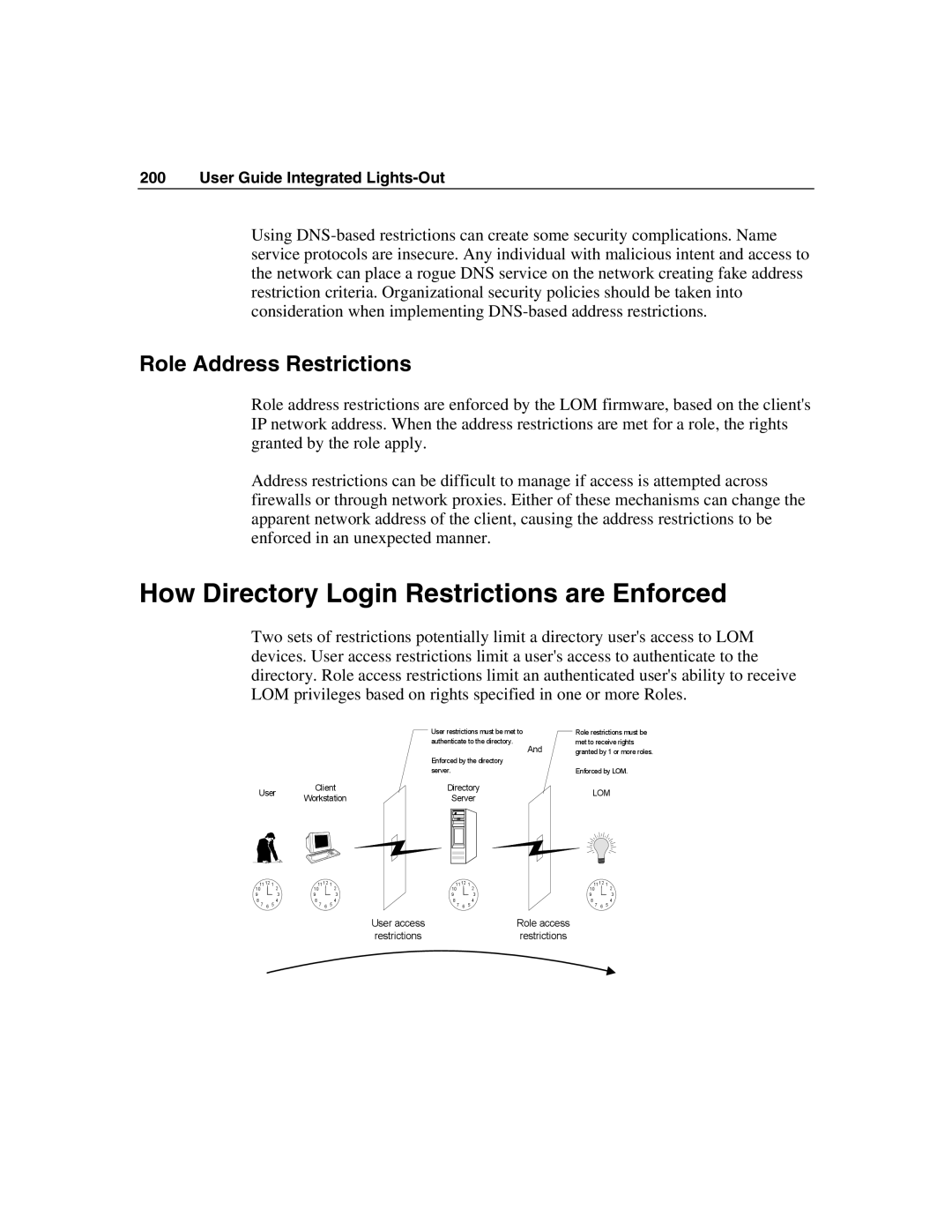
200 User Guide Integrated Lights-Out
Using
Role Address Restrictions
Role address restrictions are enforced by the LOM firmware, based on the client's IP network address. When the address restrictions are met for a role, the rights granted by the role apply.
Address restrictions can be difficult to manage if access is attempted across firewalls or through network proxies. Either of these mechanisms can change the apparent network address of the client, causing the address restrictions to be enforced in an unexpected manner.
How Directory Login Restrictions are Enforced
Two sets of restrictions potentially limit a directory user's access to LOM devices. User access restrictions limit a user's access to authenticate to the directory. Role access restrictions limit an authenticated user's ability to receive LOM privileges based on rights specified in one or more Roles.
User restrictions must be met to authenticate to the directory.
And
Enforced by the directory server.
Role restrictions must be met to receive rights granted by 1 or more roles.
Enforced by LOM.
User | Client | Directory | LOM | |
Workstation | Server | |||
|
|
11 | 12 1 | 11 | 12 1 | 11 | 12 1 | 1112 | 1 | |
10 | 2 | 10 | 2 | 10 | 2 | 10 |
| 2 |
9 | 3 | 9 | 3 | 9 | 3 | 9 |
| 3 |
8 7 | 6 5 4 | 8 7 | 6 5 4 | 8 7 | 6 5 4 | 8 7 | 6 | 5 4 |
|
|
| User access |
|
| Role access |
|
|
|
|
| restrictions |
|
| restrictions |
|
|
